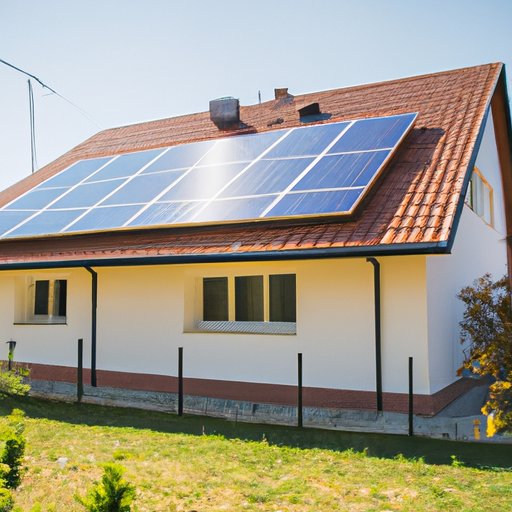Introduction
Solar technology is a form of renewable energy that harnesses the power of the sun to generate electricity. This clean energy source has become increasingly popular in recent years due to its cost savings and environmental benefits. This article will provide an overview of solar technology, exploring the basics of how it works, the benefits of using solar power, a guide to home solar systems, and an overview of solar energy financing.

Exploring the Basics of Solar Technology
Solar technology relies on photovoltaic (PV) cells, which are made up of semiconductor materials such as silicon. When sunlight hits these cells, they convert the light into electricity. This electricity can then be used to power homes, businesses, and other applications.
There are two main types of solar panels available: monocrystalline and polycrystalline. Monocrystalline panels are made from single-crystal silicon and tend to be more efficient than polycrystalline panels, which are made from multiple silicon crystals. The efficiency of solar cells is measured in terms of the amount of sunlight they can convert into electricity, with higher efficiency meaning more electricity production.

Examining the Benefits of Solar Power
One of the primary benefits of solar power is cost savings for homeowners. By investing in a solar system, homeowners can reduce their monthly electric bills while also increasing their home’s value. Additionally, many states offer tax incentives and credits for installing solar systems, making them even more affordable.
In addition to the financial benefits, solar energy also offers environmental benefits. Solar power produces no greenhouse gases, helping to reduce air pollution and combat climate change. It also reduces our dependence on fossil fuels, helping to conserve non-renewable resources.
A Guide to Home Solar Systems
Installing a home solar system requires several components, including solar panels, an inverter, a racking system, and batteries (if needed). Each component is designed to work together to capture and convert the sun’s energy into usable electricity. The size of the solar system you need will depend on your energy needs and the amount of space you have available.
When installing a solar system, there are certain requirements you must meet, such as having a suitable roof and obtaining any necessary permits or approvals. Additionally, solar systems require regular maintenance, such as cleaning the panels to ensure optimal performance.
An Overview of Solar Energy Financing
For those who don’t have the upfront capital to purchase a solar system, there are several financing options available. Solar leasing allows homeowners to rent their solar system, typically for a period of 20 years. During this time, the homeowner pays a fixed rate for the electricity produced by the system.
Solar loans are another financing option, allowing individuals to borrow money to purchase a solar system. These loans generally have low interest rates and long repayment periods, making them an attractive option for many homeowners. Additionally, there are grants and rebates available to help offset the cost of purchasing a solar system.

The Future of Solar Technology and Its Impact on the Environment
The future of solar technology is bright. The cost of solar energy has dropped significantly in recent years, making it more accessible than ever before. As the technology continues to improve, experts predict that the adoption of solar energy will continue to grow. This growth could have a major impact on the environment, helping to reduce our dependence on fossil fuels and lower emissions.
However, there are still challenges facing solar adoption, such as the availability of financing options and access to solar energy in rural areas. In order for solar technology to reach its full potential, these issues must be addressed.
Conclusion
Solar technology is an increasingly popular form of renewable energy that offers numerous benefits, including cost savings and environmental protection. This article has explored the basics of solar technology, the benefits of using solar power, a guide to home solar systems, and an overview of solar energy financing. With continued advancements in the technology, solar power has the potential to revolutionize the way we generate energy.
(Note: Is this article not meeting your expectations? Do you have knowledge or insights to share? Unlock new opportunities and expand your reach by joining our authors team. Click Registration to join us and share your expertise with our readers.)
